Irrigation Company In Nairobi
In 2017 through 2018, Grekkon Limited was an irrigation company in Nairobi servicing small to medium scale holders. The company’s focus was on irrigation and allied services. these are;
- Irrigation. drip, overhead, and sub surface irrigation systems
- Dam liners. for irrigation water harvesting and conservation
- Greenhouses. steaal and wooden types
- Borehole drilling
- Water pumps. solar, electric, petrol and diesel types
- Solar dryers. for post harvest crop loss management
- Agricultural nets. bird nets for bird pests, shade nets for , and insect nets for insect pests
- Trays. seedling trays for seedling propagation, and hydroponic trays for hydroponic fodder production
- Coco peat. a non soil media for use in seedling trays
- Mulch paper. to manage field water loss through evaporation, weed and pest control
While improving the clients’ overall yield, and income from farming. The company focuses on this smallholder, and medium holder niche because of the presence of large irrigation service providers in the country. These companies clientele are the large ornamental, cereal and vegetable growers. Smaller growers had to fend for themselves because they were never a priority for these large corporates. A hallmark of the company is the free 4 month agronomy training programs for all their farmers. Grekkon Limited is the only company that offers this free service to farmers in Kenya
The company organizes ‘training days’ in various regions of the country. Growers come to learn of new and existing technologies.
The other objective was to do further by offering expert irrigation, greenhouse, water pumps, and dam lining expertise to these small scale to medium scale commercial farmers, who had no professional entity to consult for such. This was through physical site visits to carry out assessments, provide advice, and carry out irrigation project reviews afterwards. And so, Grekkon Limited – Irrigation Hub was born. It is headquartered in Athi River, with outlets in other key agricultural zones in Kenya
Two years after establishment, Grekkon won the coveted Most Preferred Irrigation Systems Company of the Year award in 2019. This was at the prestigious Agribusiness Excellence Awards ceremony. The farmers in their votes had finally spoken!
Irrigation Company In Nairobi
1. Irrigation Products
- Drip kits. For both vegetable and fruit tree/ forestry irrigation. This includes; drip tape, 16mm HDPE pipe, starter connectors, off-takes, drip to drip connectors, button or online drippers, and end caps
- Rain hose kits. It has; rain hose pipe, off-takes, connectors, and an end cap. Rain hose kits are best utilised where drip irrigation systems cannot be installed such as is pasture, or crop nurseries
- Sprinkler systems. There are various types;
3.1. Pop up sprinklers. These are sub-surface sprinklers for lawns, golf course, football pitches, and gardens
3.2. Rain gun sprinklers. These are metallic high pressure, high volume sprinklers for use in all crops. They are well utilised in larger acreage because they have a wide area of spray
3.3. Impact sprinklers. They are plastic and range from 1/2″ to 1″. Mostly used to irrigate small vegetable farmes, or pasture
3.4. Meganet sprinklers. These are plastic sprinklers that range from 1/2” to 1”. They are a suitable alternative to impact sprinklers
3.5. Butterfly type sprinklers. They are for lawns and small gardens like the kitchen garden
3.5. Micro sprinklers. They irrigate individual fruit tree plants, just like button drippers. However they cover a wider area, and provide better humidity around the crop’s root zone
In this video below, a smallholder farmer who was an early adapter of Grekkon’s rain hose kits. She speaks about her growing experience
4. Misters and foggers. Used in greenhouses for seedlings watering, and humidity control
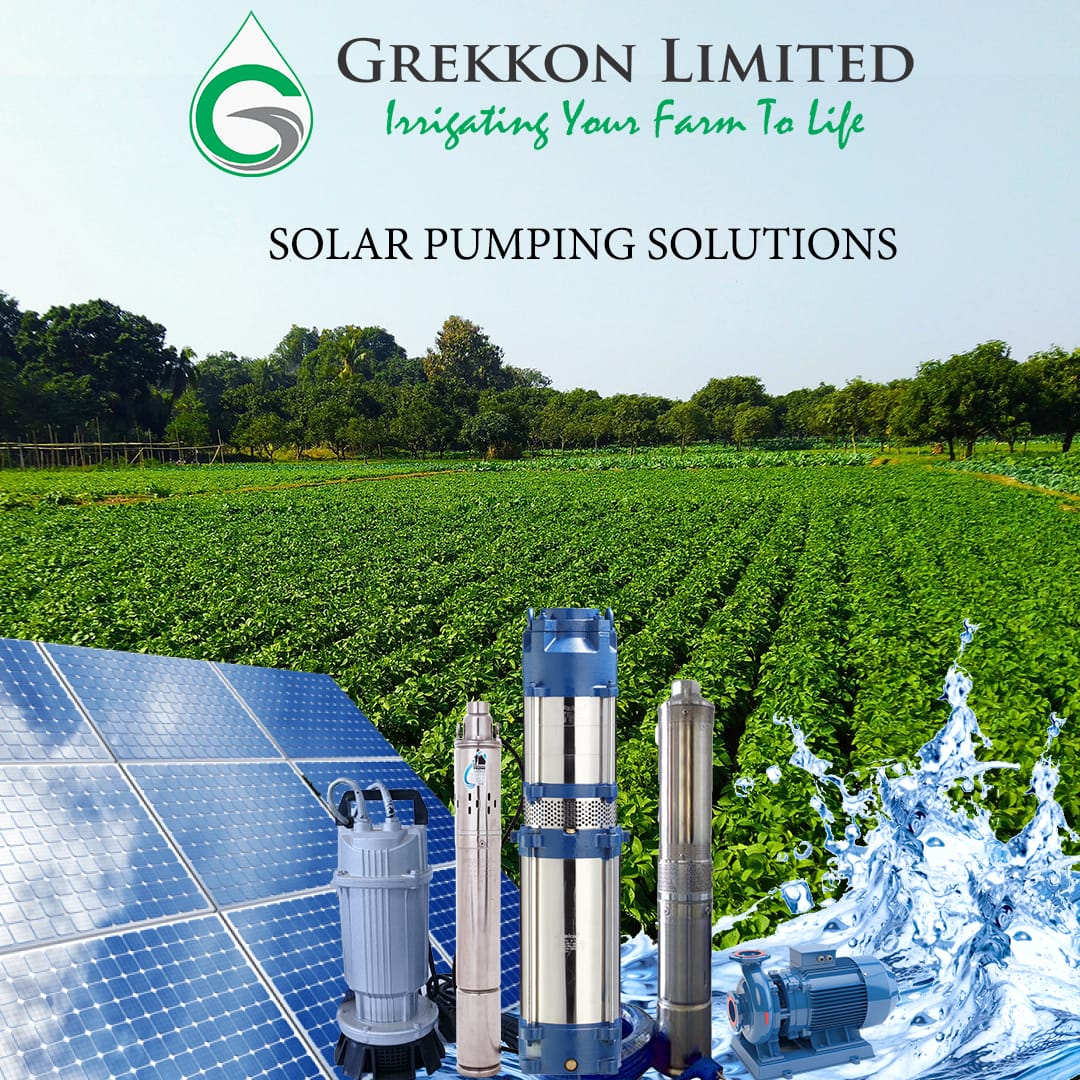
Solar water pumps by Grekkon Limited
5. Water pumps;
As an irrigation equipment supplier, every irrigation system is backed by the following types of water pumps to draw water from a source, to supply the irrigation system
i. Solar water pumps. These are either surface or submersible types. Submersible water pumps work under water, while surface water pumps are ground based
ii. Electric water pumps. Like solar water pumps, they’re surface and submersible options
iii. Diesel generator water pumps. They run on diesel powered engines. They are portable or fixed types. The latter are larger in size
iv. Petrol water pumps. They run on petrol powered engines, and are smaller than diesel water pumps
6. Irrigation pipes
6.1. HDPE pipes from 16mm through 280mm diameter. The pipe thickness is from PN6 through PN25
6.2. PV pipes from 20mm through 280mm diameter. The pipe thickness is from PN6 through PN25
6.3. Suction pipes for supply with water pumps
6.4. Delivery pipes as either canvass or PVC material
Irrigation Company In Nairobi
Water pump accessories
Accessories that accompany motor powered pumps are; foot valves, clips, suction pipes, adaptors, splicing kits, control boxes, invertors (for DC to AC converstion) cables, cable ties, solar panels (for solar pumps), and a solar panel support structure
Accessories that accompany motor powered pumps are; foot valves, clips, suction pipes, and adaptors
Every irrigation system has a main, and/ or sub-main pipes. We advice on the right pipe thickness, size and type based on
- Land size; determines pipe size. Large pipes for large acreage. Our pipe sizes range from 16mm to 180mm in diameter
- Irrigation system adopted; any of the 1 to 3 above
- Land ownership system; leased or owned? HDPE for the former, PVC for the latter
These pipes have specific fittings which are; elbows, tees, valve sockets, ball valves, couplings, adaptors,sockets,saddle clamps, and end caps by type and size
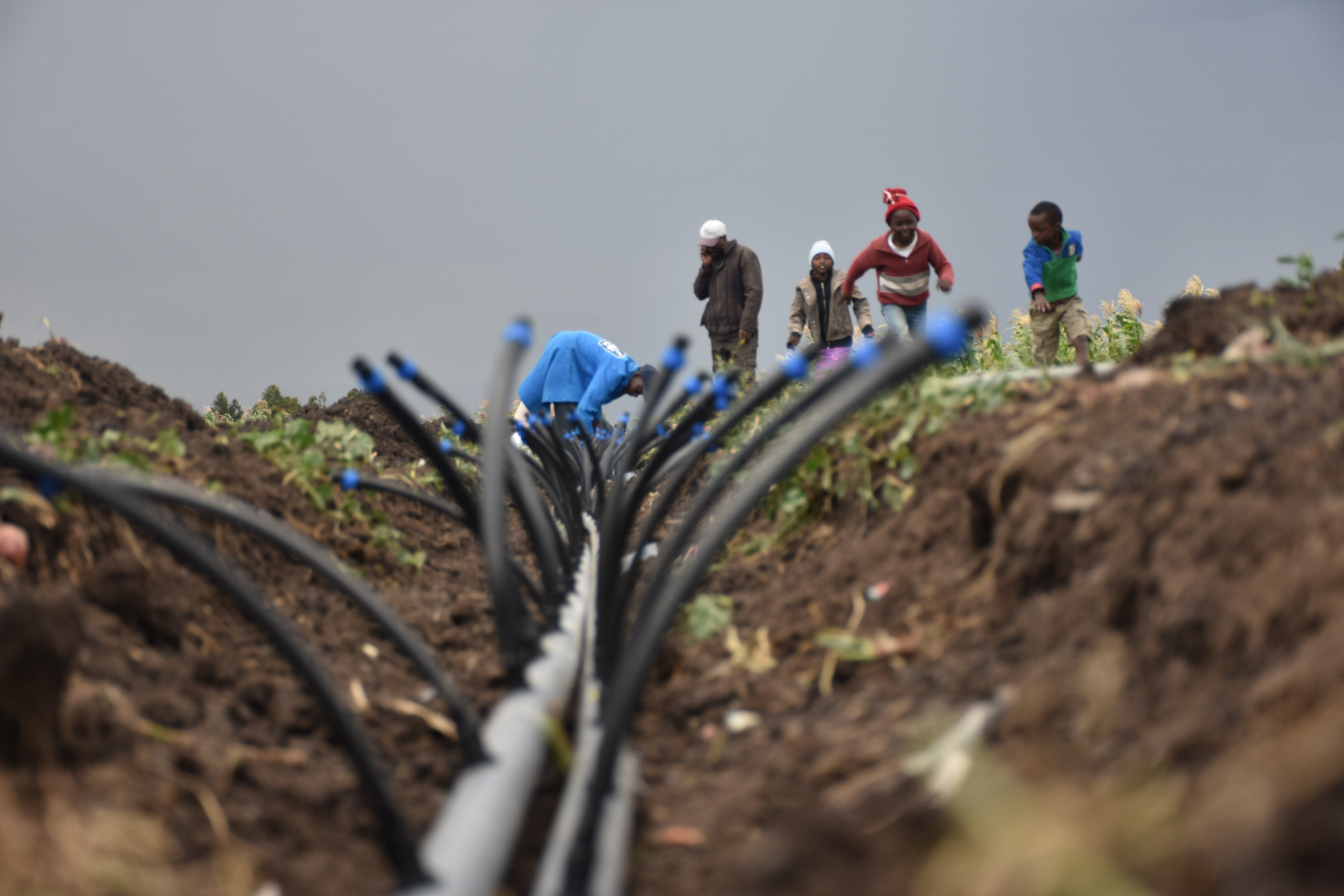
Drip irrigation system under installation by Grekkon Limited using PVC pipes as main and sub-main lines
Irrigation Company In Nairobi
Installation Service
Our irrigation service team conducts systems installations service in east Africa. We offer advisory services to manage the system well for many years
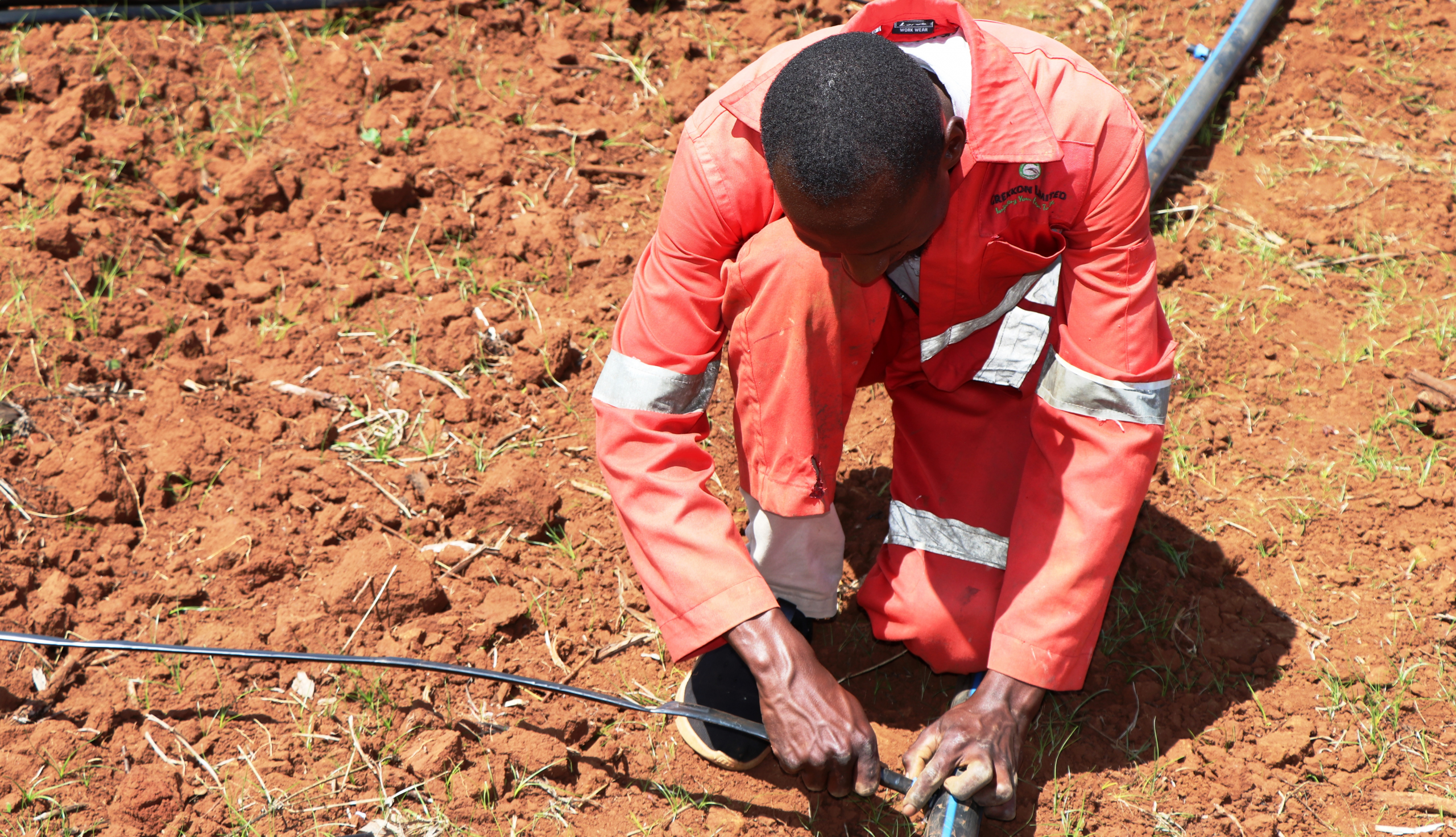
A client’s irrigation system installation by a company technician
Irrigation Company In Nairobi
Key Attributes
Innovation
Grekkon Limited in its innovation introduced the rain hose irrigation system. This new product solved many irrigation challenges for commercial vegetable and corn farmers. The company is the market leader in research and commercialization of natural solar dryers, each unit designed to meet the product or market drying requirements
Today, Grekkon Limited is the largest supplier of natural solar dryers within the east Africa community states
In 2024, Grekkon Limited introduced the first color coded drip tapes in the Kenyan market
Team
Grekkon Limited’s resounding success is largely due to its team of field professionals who provide engineering, commercial, and technical services
Country Wide Presence
As an major irrigation company in Kenya, Grekkon Limited has offices in; Athi River, Nairobi, Kisumu, Eldoret, Nyeri, and Nyahururu
Small Irrigation Equipment Supplier
Grekkon Limited is a small irrigation equipment supplier in east Africa. Domiciled in Kenya, we serve farmers in; Cameroon, DRC, Ethiopia, Kenya, Nigeria, Rwanda, Somalia, South Sudan, Tanzania, Uganda and Zambia.
Our irrigation materials, tools and equipment vary with the system adopted by a grower. Below is our irrigation equipment list
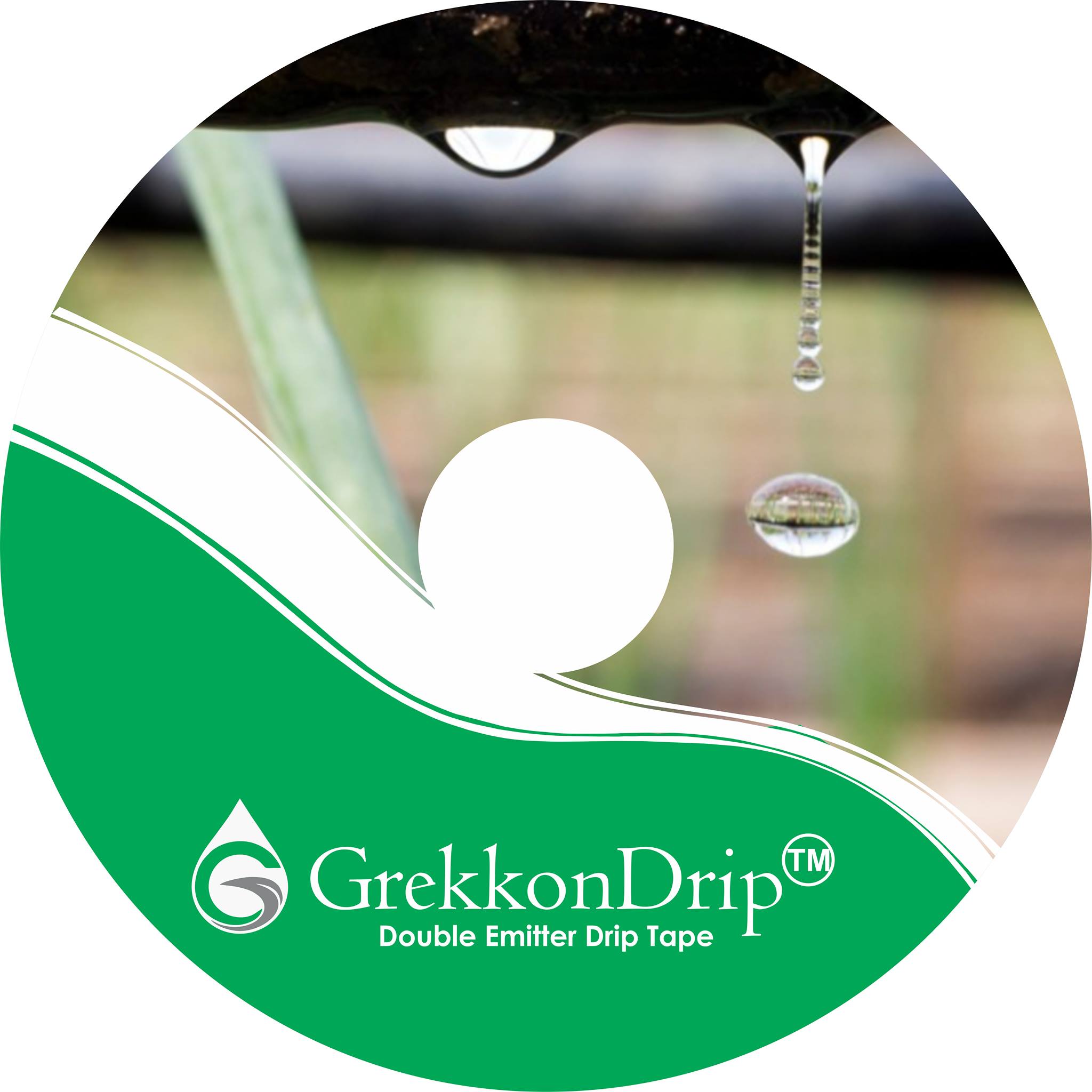
Double emitter drip tapes pioneered in Kenya by Grekkon Limited
Small Irrigation Equipment Supplier
Types of Irrigation Equipment
- Drip kits. For both vegetable and fruit tree/ forestry irrigation. This includes; drip tape, 16mm HDPE pipe, starter connectors, off-takes, drip to drip connectors, button or online drippers, and end caps
- Rain hose kits. It has; rain hose pipe, off-takes, connectors, and an end cap. Rain hose kits are best utilised where drip irrigation systems cannot be installed such as is pasture, or crop nurseries
- Sprinkler systems. There are various types;
3.1. Pop up sprinklers. These are sub-surface sprinklers for lawns, golf course, football pitches, and gardens
3.2. Rain gun sprinklers. These are metallic high pressure, high volume sprinklers for use in all crops. They are well utilised in larger acreage because they have a wide area of spray
3.3. Impact sprinklers. They are plastic and range from 1/2″ to 1″. Mostly used to irrigate small vegetable farmes, or pasture
3.4. Meganet sprinklers. These are plastic sprinklers that range from 1/2” to 1”. They are a suitable alternative to impact sprinklers
3.5. Butterfly type sprinklers. They are for lawns and small gardens like the kitchen garden
3.5. Micro sprinklers. They irrigate individual fruit tree plants, just like button drippers. However they cover a wider area, and provide better humidity around the crop’s root zone
In this video below, a smallholder farmer who was an early adapter of Grekkon’s rain hose kits. She speaks about her growing experience
4. Misters and foggers. Used in greenhouses for seedlings watering, and humidity control

Solar water pumps by Grekkon Limited
5. Water pumps;
As an irrigation equipment supplier, every irrigation system is backed by the following types of water pumps to draw water from a source, to supply the irrigation system
i. Solar water pumps. These are either surface or submersible types. Submersible water pumps work under water, while surface water pumps are ground based
ii. Electric water pumps. Like solar water pumps, they’re surface and submersible options
iii. Diesel generator water pumps. They run on diesel powered engines. They are portable or fixed types. The latter are larger in size
iv. Petrol water pumps. They run on petrol powered engines, and are smaller than diesel water pumps
Small Irrigation Equipment Supplier
Water pump accessories
Accessories that accompany motor powered pumps are; foot valves, clips, suction pipes, adaptors, splicing kits, control boxes, invertors (for DC to AC converstion) cables, cable ties, solar panels (for solar pumps), and a solar panel support structure
Accessories that accompany motor powered pumps are; foot valves, clips, suction pipes, and adaptors
Every irrigation system has a main, and/ or sub-main pipes. Our irrigation pipes are HDPE and PVC. We advice on the right pipe thickness, size and type based on
- Land size; determines pipe size. Large pipes for large acreage. Our pipe sizes range from 16mm to 180mm in diameter
- Irrigation system adopted; any of the 1 to 3 above
- Land ownership system; leased or owned? HDPE for the former, PVC for the latter
These pipes have specific fittings which are; elbows, tees, valve sockets, ball valves, couplings, adaptors,sockets,saddle clamps, and end caps by type and size

Drip irrigation system under installation by Grekkon Limited using PVC pipes as main and sub-main lines
Small Irrigation Equipment Supplier
Installation Service
Our irrigation service team conducts systems installations service in east Africa. We offer advisory services to manage the system well for many years

A client’s irrigation system installation by a company technician
Metallic Greenhouse Price In Kenya
Every metallic greenhouse price in Kenya by Grekkon Limited is determined by the greenhouse type, and size. All metallic greenhouses in Kenya by the company are made from galvanised steel. They are built to last for decades under intense crop production
Metallic Greehouse Price In Kenya
Our metallic greenhouse price in Kenya is provided in the tabulations below by cost and size for galvanized metallic greenhouse tunnel-type structures. Each unit has a drip irrigation kit, side roll-ups, and an entry pouch. We offer a crop support structure, a 1,000L tank, PPE kits, fertilizer, and seeds package at an extra cost. Consideration is made for a grower’s greenhouse budget. These prices include all greenhouse materials in Kenya
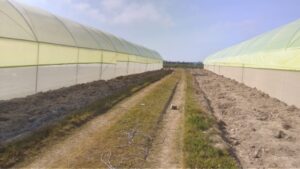
Completed units of metallic greenhouses by Grekkon Limited in Heni area, Nyandarua county
How much does a metallic greenhouse cost in Kenya?
A. Small
| Dimensions in meters | Tomato Crop Population | Price in KES |
| 15 x 8 | 600 | KES 195,000 |
| 24 x 8 | 800 | KES 275,000 |
| 30 x 8 | 1,200 | KES 365,000 |
| 40 x 8 | 1,500 | KES 530,000 |
| 48 x 8 | 1,600 | KES 600,000 |
B. Medium
| Dimensions in meters | Tomato Crop Population | Price in KES |
| 24 x 16 | 1,500 – 1,600 | KES 540,000 |
| 30 x 16 | 2,400 | KES 660,000 |
| 40 x 16 | 3,000 | KES 990,000 |
C. Large
From 800M square. Kes 900 per meter square. We customise our price according to size, and your greenhouse budget
Metallic Greenhouse Price In Kenya
5 Key Factors That Determine Greenhouse Cost
- unit size. The larger it is, the costlier it becomes for the reason that it take in more material and labour. The choice a greenhouse of size is determined by; land area, water availability, and a grower’s budget
- design. A tunnel type greenhouse is less costly than a vented type. This is because the latter has a larger roof surface area. Tunnel type greenhouses are for cooler highland locations, while the vented types are for warmer mid to low altitude areas. co-joined units are less costly than single units. For intance, 3 units measuring 30M x 8M built separately are more expensive than contructing them as one co-joined unit measuring 30M x 24M
- greenhouse construction frame material of the unit. Grekkon Limited as a top greenhouse construction company in Kenya, has an option of a low cost greenhouse constructed from timber. This is referred to as a wooden greenhouse, or the option of the more pricey metallic greenhouse. Both serve the same purposes
- frame treatment undertaken. Timber for greenhouse construction in Kenya is either treated with light organic solvent preservative (LOSP), or with used motor oil. These treatments protect the timber from termite attack. LOSP treatment is costlier, and preserves the wood longer. Motor oil has to be re-applied every so often and should not be in contact with the crop. Steel is either galvanised with zinc, or an aluminum paint coat is applied on the surface. In this too, the former treatment is costlier, and remains for long
- greenhouse crop type. our greenhouse construction cost in Kenya for each of these types is determined by the crop type. For instance, an indeterminate crop that requires an internal crop support system will have a more costly greenhouse than a short strawberry crop. The greenhouse installation cost of a plant propagation unit with misters and foggers is higher than a herbs and spices unit without such
Metallic Greenhouse Price In Kenya
These are the materials used in metallic greehouses in Kenya installations
I. UV treated greenhouse polythene with anti drip properties
This is the key material that protects the crop from the elements of weather; sun, wind and rain. It creates the ‘greenhouse effect’, and minimises disease and pest incidences on the crop. It is either clear or yellow in color. Clear greenhouse polythene for fruiting crops, or in ornamentals, bi or multi colors. This is because it allows in more light which these need for photosynthesis, the process that makes food for the plants. Yellow is for vegetative crops, and mono color ornamentals. In mono color ornamentals, it intensifies the color
II. Galvanised steel bars
They provide structural support to the greenhouse, and also to the crop as ‘crop support structures’ for tall indeterminate crops such as; tomato, peppers, and cucumbers
III. UV treated high density insect nets
These nets keep away insect pests. They are for self pollinating (do not require external pollinators such as insects and birds) greenhouse crops
IV. Bird nets
These are only used in greenhouse crops that require insect pollination from bees, butterflies, hornets and many other pollinating insects. They allow in the insects, but keep away bird pests. An example of such a crop is strawberry
V. Profiles
They are screwed onto the galvanised steel bars so that the greenhouse cover is tucked in them
VI. Wiggle wires
Once the greenhouse cover is tucked in the profile, wiggle wires keep it in place so that it is not removed by wind or other physical force. Wiggle wires have a plastic covering to prevent damage to the greenhouse paper the are in direct contact with
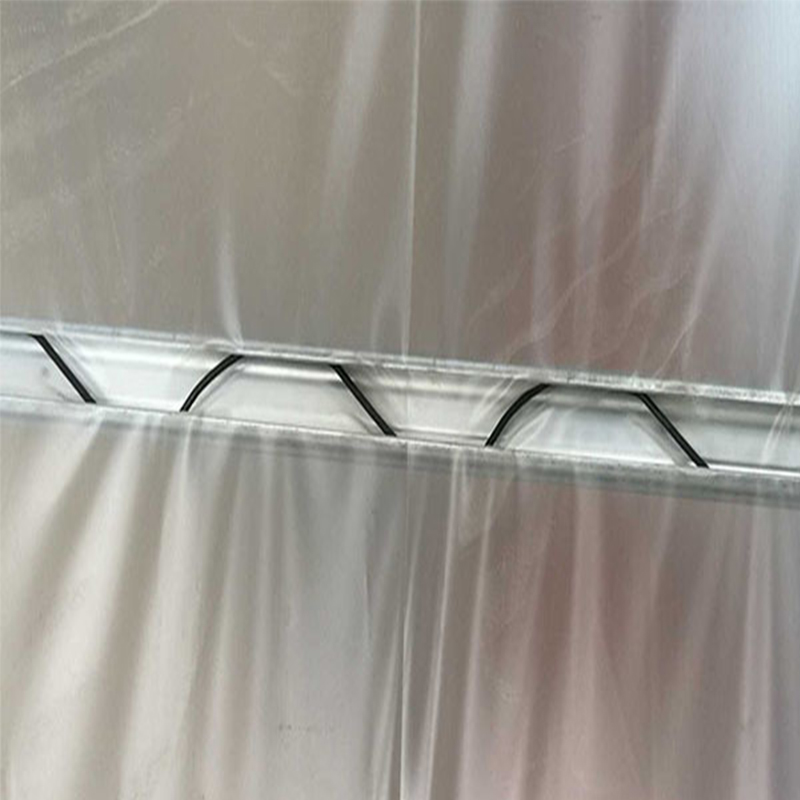
Wiggle wires hold in place a clear greenhouse polythene sheet tucked in a profile
VII. Screws
The join the profiles to the galvanised steel structure
VIII. Concrete
This is what supports the metallic greenhouses in Kenya structures on the ground and keeps them upright
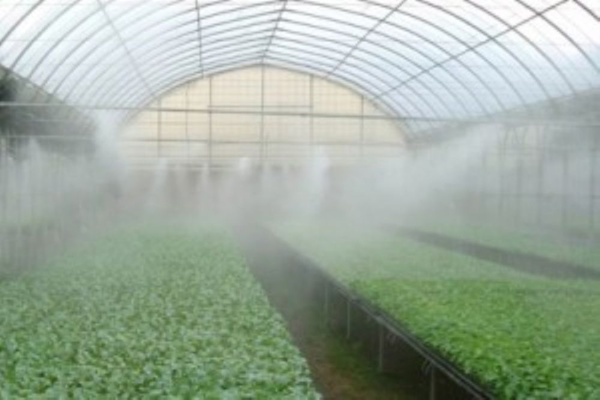
Humidification through misters in a seedlings propagation greenhouse
Successful greenhouse farmers in Kenya grow both none food and food crops in our metallic greenhouses. Common greenhouse food crops are; tomato, peppers, strawberries, and cucumber. Galvanised steel bars, insect netting, screws, and profiles are our greenhouse construction materials. With labor addition, all now constitute your final greenhouse cost
Grekkon Limited’s metallic greenhouse price in Kenya will include; a drip irrigation system for crop production, or a misting/ fogging system for seedlings propagation, and labour. Sprinkler irrigation systems are not installed in greenhouses
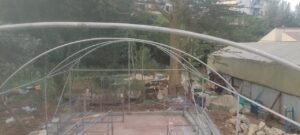
A bird’s eye view of a metallic greenhouse for seedlings propagation under construction by Grekkon Limited at the ICIPE institute in Kasarani area, Nairobi county
Solar Dryers For Coffee In Kenya
Solar dryers for coffee in Kenya by Grekkon Limited improve the drying efficiency of harvested coffee cherry. In Kenya, harvested cherry is largely manually open dried which takes 10 – 14 days depending on the location and the prevailing temperatures. Open coffee drying is done on wooden raised table structures with a wire mesh bed laid out where the coffee cherry is spread thinly. The coffee cherry is dried by direct solar radiation and wind movement
Cost of solar dryers for coffee in Kenya
The overall cost of a solar dryer depends on the size. The average price of a large solar dryer for coffee in Kenya is Kes 1,200/M square
Challenges of open coffee drying
- it is labour intensive. This is needed to turn it over every 45 minutes to 1 hour on the bed to ensure eveness of drying, covering it in the evening or on rainy days with a polythene cover to prevent moisture entry
- quality degradation as a result of moisture entry, dirt and other contaminants
- it requires lots of space because the beds cannot be designed in a storeyed manner
- none uniformity of drying because it is turned over by hand on the raised drying beds

Open drying of coffee cherries in a coffee factory in western Kenya
The key advantage of open sun drying of coffee is that it is cheap, and has zero CO2 emissions
The coffee is dried from 60% to 10% – 11% moisture level. There are six stages in cofee drying
1) Skin drying. Moisture 55-45%.
2) White Stage drying. Moisture 44-33%.
3) Soft Black stage. Moisture 32-22%.
4) Medium Black Stage. Moisture 21-16%
5) Hard Black Stage. Moisture 15-12%
6) Fully dry coffee and conditioning. 11-10%
Coffee drying is a post-harvest handling process where the coffee quality is preserved instead of improving it. Different temperature limits are allowed for differet coffee processing methods. Moisture level are checked to prevent moulding on the drying coffee
Solar dryers for coffee in Kenya by Grekkon Limited provide a low cost, efficient, zero CO2 emissions, and a clean way to dry cofee cherry. The use of solar dryers mitigates against the challenges faced under open sun drying.
How does a solar dryer for coffee work?
1. Air in the dryer in contact with the coffee is heated through solar radiation
2. Mositure in the coffee beans rises and is expelled through a ventilation
The temperature in the coffee solar dryer is on or about double that of the ambient temperature
Benefts of a solar dryer for coffee
- the coffee beans are not tuned over manually to achieve eveness of drying. This cuts out the huge labor cost coffee factories incur during coffee drying. Eveness of drying is well achieved as hot air dries every bean uniformly
- there is no external mositure entry especially from rain. This removes any occurence of moulding or mildew
- coffee dries at half the time or less that it would take under direct sun drying. This reduced drying time saves on operational costs
- there are no external contaminants
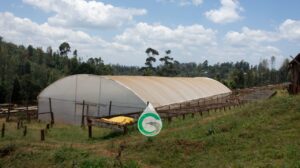
The exterior of a solar dryer built in a coffee factory by Grekkon Limited
- the polythene paper cover used has UV block treatment which preserves the quality of the coffee bean. It also has anti-drip attributes, so that dew does not form on it, then drop on the coffee
- space is eficiently used because the drying racks are stacked up over each other, unlike in open sun drying where each coffee cherry must make contact with the sun’s rays to dry
- in areas where coffee theft in factories is rampant, the solar dryer can be locked to prevent entry. This is not possible under open sun drying
- drying goes on even in hazy, cloudyor rainy conditions. Coffee is thus dried anytime of the year
Demerits of a dryer for coffee
- it is expensive to isntall
- the polythene cover has to be changed every 3 -4 years when the UV block treatment has worn off
- it is uncomfortable to work in during the day as the internal temperature is high
- where care is not taken, over-drying of coffee may happen, which reduces its quality and its subsequent market price. A moisturemeter should always be used in the drying process to prevent this
- it requires maintainance

A coffee solar dryer working principle
A coffee solar dryer can be enhanced with solar module powered extraction, and exhaust fans. This will further improve on the drying time as moisture is extracted faster. However, due to the large size of the unit, it is an expensive undertaking. It is largely used in smaller fish, herbs, spices,vegetable and fruit solar dryers
How to install solar dryers for coffee
- create raised tables from timber or galvanised steel not more than 1M in width. The length is as much as can be done. These tables can be storeyed upto 3 levels with vertical gaps of 0.75M – 1M between the levels. The horizontal distance from a table to another is 0.5M
- lay a food grade wire mesh over the tables to hold the coffee. A shade net or insect net can be used. The reason a perforated membrane is laid is to allow for free drying air movement on the beans
- construct the galvanised steel framework over these tables to amaximum mid height of 5M
- lay the greenhouse polythene paper over the steel frame
- place an insect net in the air entry and exit points.An insect net prevents entry of insect pests

A 2 level table bed coffee dryer by Grekkon Limited in Kagumoini area, Nyeri county
Grekkon Limited provides training on proper coffee drying in a solar dryer, and also on the maintainance and managemnt of the solar drying unit after installation to coffee societies in Kenya
(more…)
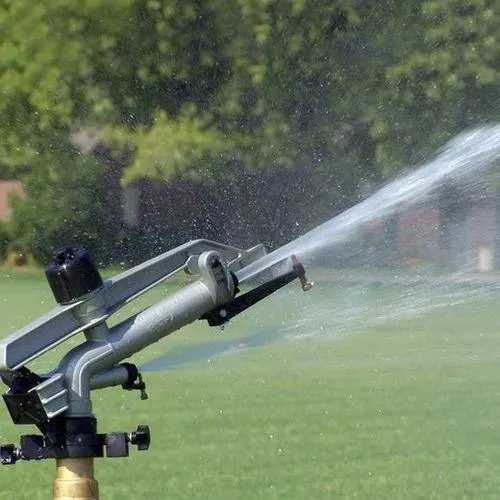
Long Range Sprinkler
Our long range sprinkler models irrigate large acreage of horticulture, fruit, corn, wheat, barley, canola, and potato crops. Every long range sprinkler in Kenya by Grekkon Limited is from 1-1/2” to 2-1/2” inlet diameter size.
Long range sprinkler specifications
- Material. Aluminum, brass, and steel
- Nozzle sizes. 12mm, 16mm, 18mm, and 20mm
- The diameter of spray. 35M to 40M for the 1-1/2” and 45M to 60M for the 2”
- Discharge volume. 15 cubic to 30 cubic per hour for the 1-1/2” and 20 cubic to 45 cubic per hour for the 2″
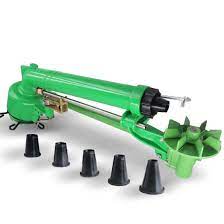
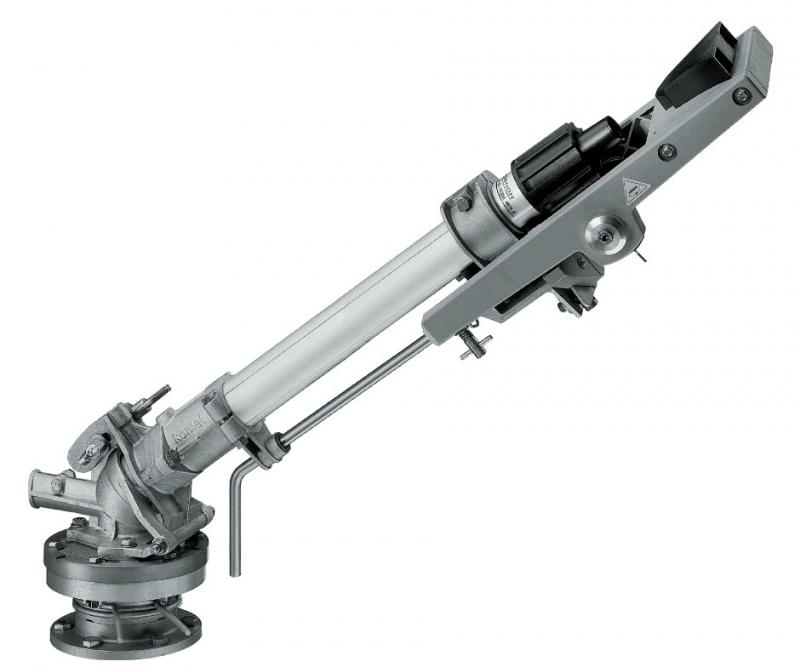
Note that the diameter of spray and discharge volume is a factor of the nozzle size and diesel or electric pump capacity (engine/ motor size, pressure rating, and discharge rate)
How much is a long range sprinkler in Kenya?
- 1-1/2” is Kes 55,000
- 2” is Kes 65,000
This cost is inclusive of the steel tripod stand
How to work with long range sprinkler requirements
i. Water availability. It requires 30 cubic per hour as a minimum. If irrigation takes 5 hours per day, then 150 cubic must be available
ii. Pressure. Check your ground elevation, determine your pressure loss in the system and your pipe size. Work backward to determine the water pump type that matches your sprinkler choice. The frictional losses along the pipeline will be taken into consideration too
iii. Crop water requirement. This determines the time spent in irrigation

A long range 2″ rain gun sprinkler on display at Grekkon Limited’s ware house in Athi River
Long range sprinkler
FAQs
1. How much does a sprinkler system cost in Kenya?
The cost of a sprinkler system in Kenya is from Kes 55,000 per acre depending on the sprinkler type and number of sprinklers installed
2. What is the distance of a rain gun?
This is from 17M to 50M diameter of spray
3. How much HP motor is required for a rain gun?
A ran gun sprinkler will work with a fossil fuel powered water pump with an engine power from 7.5Hp
4. What pressure is needed for a rain gun?
From 3 bars or 30M lift
5. How to select a long range sprinkler?
Consider the following
- water volume available
- the water pump specifications
- the lift or ground elevation
- the acreage under irrigation
6. What are the benefits of a long range sprinkler system?
- it irrigates over a short period of time saving energy
- it is movable
- there are different sizes to choose from
- it covers both small and large acreage
- it is easy to install
- a large volume of water is provided
- it raises the humidity level around the crop
7. What are the disadvantages of a long range sprinkler?
- it consumes copius amounts of water
- it requires a large water pump for energy
- if left operational for a longer than recommeneded period, it causes soil erosion
- it will not work with gravity flow as the pressure is too low
- it is unsuitable for certain crops because they cause flowe rabortion or make them more susceptible to fungal infections when the foliage is left moist
8. How efficient is a rain gun?
It uses half the water volume that flood irrigation would use. However, it uses more than 3 times what would be achieved under drip irrigation
9. What is the diameter of a rain gun sprinkler?
The diameter of a rain gun sprinkler is from 1″ through 2-1/2″
10. How long does a sprinkler system last?
From 20 years under proper care for the metallic types, and just under 5 years for th plastic analogues
11. How effective is rain gun irrigation?
It is carried out for many crops so long as there is sufficient water volume at the source. It is particularly useful for crops that have large spaces in between
12. What is the difference between rain gun and drip irrigation?
- water application. Rain guns apply from the top (overhead), while drip pipes apply from below
- water efficiency. Drip irrigtaion is more water efficient
- cost. drip irrigation systems are more expensive to install
- crop type. drip irrigation will be used for more crop types than rain gun sprinklers
- rain gun sprinklers unlike drip lines will be installed in uneven terrain
- rain gun sprinklers are preferred most under large acreage
13. How many minutes should I run my rain gun?
Depending on the rain gun size, this is from 15 minutes for the large ones, to 35 minutes for the smaller types. Irrigation is done twice a week
14. How do you maintain your sprinkler system?
- ensure that there are no blockages
- clean any debris stuck
- change or repair any loose springs

A 2-1/2″ long range rain gun sprinkler at work
Long range sprinkler
Your long range rain gun sprinkler will have a tripod steel support stand. The water delivery pipe is attached to the hollow bottom of the stand
The water drops are fine to use on flowering crops without causing flower abortion. On solanaceous crops such as; tomatoes, potatoes, peppers, irrigate in the morning hours and not in the evening. This allows the moisture to dry off from the leaves, which minimises blight infection.
Before installation, our technical team makes a site visit to make the system layout plan. This is important to ensure that every inch of the farm is covered during irrigation and that there are no dry ‘shadows.’
These giant sprinklers irrigate over a short period of time, in a large area.
Hybrid Solar Dryers For Sale In Kenya
Hybrid solar dryers for sale in Kenya by Grekkon Limited are active dryers designed to dry quicker, all year round. They are augmented units of the conventional passive solar dryers. The company has three types of hybrid solar dryers for sale in Kenya- Solar powered. These units have a solar powering system that runs the extraction and exhaust fans. The fans provide better movement of air within the dryer, and removal of the moisture from the drying produce. This hastens the drying process
- Biomass powered. They have a biomass burning unit connected on the exterior. Biomass in the form of brickettes or charcoal heats water which produces steam that travels in tubes within the dryer. This heats up the air in the dryer, accelerating the dring process. Biomass powered dryers can be used at night or on cloudy, rainy or cold days when there is insufficient sunshine to dry
Hybrid Solar Dryers For Sale In Kenya
Solar Dryer Materials
- Light UV treated translucent polythene paper to allow heat and light. The paper also has anti-drip treatment to prevent dew formation which causes moulds to form on food
- Heavy UV treated geomembrane to conserve heat
- Steel bars galvanized with food-grade aluminum or zinc for food safety
- UV treated heavy gauge netting to prevent insect pests from entering

A hybrid solar dryerwith both an external biomass heating units, and a solar power system
Hybrid Solar Dryers For Sale In Kenya
I. What is hybrid solar dryer?
It is a conventional solar dryer that receives additional drying power from an external source. This could be biomass, solar or electricityII. What are the three types of solar dryers?
- Natural / conventional solar dryers. These dry using only the power of the sun
- Forced / active dryers. They are augmented versions of the conventional solar dryers
- Portable or fixed solar dryers
III. How does a vegetable dryer work?
- Heat
They allow in diffused heat from the top and the sides, which heats up the air coming in from the air inlet. This hot air will exit with moisture in the air outlet.
- Anti-drip management
Our UV treated polythene cover has anti-drip properties so water droplets do not form on it. It prevents dripping on the drying food which is a precursor for fungal development
IV. What does a solar dryer do?
Grekkon Limited’s solar dryers reduce the moisture content to less than 12% in these products;
- Plantation crops; coffee, rice, cassava
- Vegetables; tomato, onion, garlic, brassicas, hot peppers
- Cereals; sorghum, and millet
- Herbs; moringa, mint, rosemary
- Oil crops; groundnuts, sunflower, macadamia, cashew nuts
- Others; mushrooms, fish, beef, mutton
V. How do you dry vegetables with solar?
- Wash the vegetables to remove all dirt
- Ensure there are no insect pests present
- Remove any diseased parts or produce
- Cut or grind them into smaller pieces to increase the drying surface area
Place them in the solar dryer holding trays
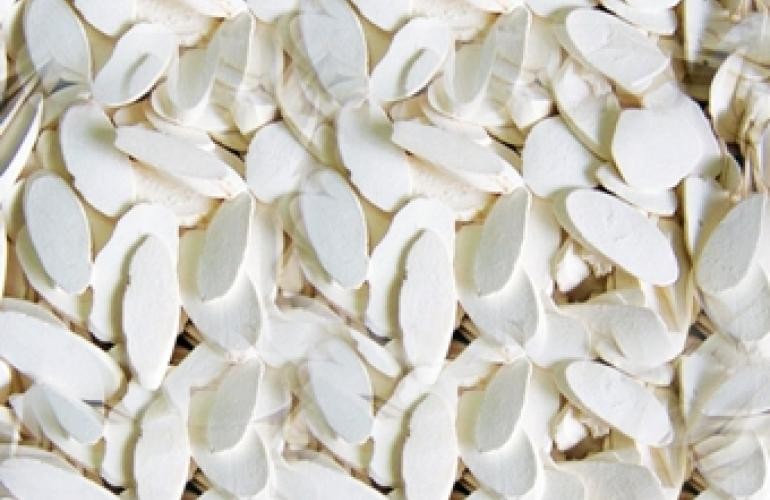
Dry cassava chips
VI. What is the most popular use of solar dryers?
To dry fruits, mushrooms, vegetables, herbs, spices, coffee, cassava, banana and fish. Banana and cassava are further processed into food flour. A solar dryer ensures that the food is free of any external contamination
VII. What are the main applications of a solar dryer?
Besides vegetables and fruits, commercial solar dryers in Kenya are for fish, root crops and mushroom drying. Commonly dried foods in Kenya through our solar dryers are:
i. Banana, cassava, pumpkin, millet, and sorghum to make food flour. Dried cassava is also processed for industrial starch manufacture
ii. Moringa as a medicinal herb
iii. Tomato, capsicum, traditional vegetables, kales, and spinach as vegetable nutrients
iv. Mango, papaya, as dried fruits for snacking
v. Omena which is the silver cyprinid fish for both human consumption, and as additive to animal feed
vi. Coffee so that it’s suitable for milling. Coffee solar dryers are the largest, each holding over 5 tons of berries per drying session
Low Cost Solar Dryers
Grekkon Limited is the largest supplier of low cost solar dryers for agricultural products in Kenya . These low cost solar dryers work on solar strength, and are also augmented with a biomass heat unit if so desired by the client. Our agricultural solar dryers design is according to the product, location, and drying volume per session. These passive or active solar dryers for fruits and vegetables are fixed or portable as the user needs it. The fixed ones are large and impractical to move about, while the portable one are small domestic drying units
What are low cost solar dryer prices in Kenya by Grekkon Limited?
We price according to size & type. The table below illustrates some sample design pricing for passive solar dryers
| Solar Dryer Size | Drying Capacity | Price of Solar Dryer |
| 1.5m x 1.5m x 1.5m | 40-50kgs | KES 70,000 |
| 2m x 2m x 2m | 50-90kgs | KES 75,000 |
| 2m x 3m x 2m | 80-100kgs | KES 95,000 |
| 2m x 4m x 2m | 90-110kgs | KES 100,000 |
| 2m x 5m x 2m | 100-130kgs | KES 120,000 |
| L X W x H |

Solar dried mango slices
Low Cost Solar Dryers in Kenya
Grekkon limited designs and constructs both passive/ natural circulation, and active/ forced circulation low cost solar dryers for agricultural products. The passive solar dryers have no additional mechanical input, while the active dryers do. Active solar dryers are also know as hybrid solar dryers. Their additional mechanical inputs are; a biomass heating unit, or solar powered exhaust plus extraction fans, and synchronizers. A hybrid solar dryer will have one (solar system or biomass heater) of these enhancements, or both. These enhance drying time by 30% to 100% compared to passive drying. Attached biomass heating units allow for night time drying, or on cloudy/ rainy days.

Solar Dryer Materials
- Light UV treated translucent polythene paper to allow heat and light. The paper also has anti-drip treatment to prevent dew formation which causes moulds to form on food
- Heavy UV treated geomembrane to conserve heat
- Steel bars galvanized with food-grade aluminum or zinc for food safety
- UV treated heavy gauge netting to prevent insect pests from entering

A simple portable solar dryer under construction by the Grekkon technical team at Rusinga Island, Homa Bay county. The local community will dry bananas for processing into flour
Below are 2 videos: The first one is of a farmer in Homa-bay county, western Kenya using a community passive/ natural circulation solar dryer to add value to banana produce. The second one is of a mango processor in Taita Taveta county at the county’s coast with an active/ forced circulation dryer. Both solar dryers are by Grekkon Limited.
Video 1. Video 2.
Our low cost solar dryers have shelves at different levels depending on the volume or weight of food crops to dry per session.
Low Cost Solar Dryer Design
What is the working principle of a solar dryer?
1. Passive/ Natural Circulation Food Solar Dryer
Grekkon Limited solar dryers work in the following steps;
i. Capture & collect the sun’s heat
ii. Create a ‘greenhouse effect’ which causes moisture loss from the produce
iii. Air coming into the dryer exits with this moisture from the vent

2 Active/ Forced Circulation Food Solar Dryer
In addition to what takes place in the passive solar drying unit, the fans force in hot air from outside, and force out hotter air combined with moisture from inside the dryer. At night or on cloudy/ rainy days, the biomass unit supplies the drying heat.

Pros and cons of a low cost solar dryer in Kenya
- Speed of drying. Food dries four to five times faster.
- Quality. As the sun’s UV rays do not get into direct contact with the drying food, the food’s; color, taste, scent, and nutritional value is unaffected
- Cleanliness. The food is free from dust, sand, or other external contaminants
- No pests. Insect, bird, or mammalian pests have no access to food in the dryer, so no attack occurs
- It is more expensive to build and maintain than open-air drying

Solar dried chilli peppers
Low Cost Solar Dryers
FAQs
I. What are solar dryer prices in Kenya by Grekkon Limited?
We price according to size & type. The table below illustrates some sample design pricing for passive solar dryers
II. How does a vegetable dryer work?
- Heat
They allow in diffused heat from the top and the sides, which heats up the air coming in from the air inlet. This hot air will exit with moisture in the air outlet.
- Anti-drip management
Our UV treated polythene cover has anti-drip properties so water droplets do not form on it. It prevents dripping on the drying food which is a precursor for fungal development.
III. What do a low cost solar dryers do?
Grekkon Limited’s solar dryers reduce the moisture content to less than 12% in these products;
- Plantation crops; coffee, rice, cassava
- Vegetables; tomato, onion, garlic, brassicas, hot peppers
- Cereals; sorghum, and millet
- Herbs; moringa, mint, rosemary
- Oil crops; groundnuts, sunflower, macadamia, cashew nuts
- Others; mushrooms, fish, beef, mutton
IV. How do you dry vegetables with solar?
- Wash the vegetables to remove all dirt
- Ensure there are no insect pests present
- Remove any diseased parts or produce
- Cut or grind them into smaller pieces to increase the drying surface area
Place them in the solar dryer holding trays

Dry cassava chips
V. What is the most popular use of low cost solar dryers?
To dry fruits, mushrooms, vegetables, herbs, spices, coffee, cassava, banana and fish. Banana and cassava are further processed into food flour. A solar dryer ensures that the food is free of any external contamination
VI. What are the main applications of a solar dryer?
Besides vegetables and fruits, commercial solar dryers in Kenya are for fish, root crops and mushroom drying. Commonly dried foods in Kenya through our solar dryers are:
i. Banana, cassava, pumpkin, millet, and sorghum to make food flour. Dried cassava is also processed for industrial starch manufacture
ii. Moringa as a medicinal herb
iii. Tomato, capsicum, traditional vegetables, kales, and spinach as vegetable nutrients
iv. Mango, papaya, as dried fruits for snacking
v. Omena which is the silver cyprinid fish for both human consumption, and as additive to animal feed
vi. Coffee so that it’s suitable for milling. Coffee solar dryers are the largest, each holding over 5 tons of berries per drying session
Where to buy dam liners in Kenya
Where to buy dam liners in Kenya is from Grekkon Limited. The company offers the best UV-treated black high density polyethylene (HDPE) dam liners manufactured for tropical climates. Our pond liners for sale in Kenya line the walls and floors of water harvesting reservoirs. This is to prevent water loss through seepage into the soil. Changing rainfall patterns and unpredictable seasons are increasingly becoming a norm in Africa. This is why the need for agricultural water conservation is growing amongst farmers. Every farmer practicing irrigation has a water source
Where to buy dam liners in Kenya
| Thickness | Weight per meter square in Kgs | Price per meter square in KES |
| 0.5mm | 0.46kg | KES 220 |
| 0.75mm | 0.88kg | KES 320 |
| 1mm | 0.91kg | KES 420 |
Water pans lined with dam liners are a source of irrigation water storage. This water is from a larger source such as a lake, river, or borehole water, and also harvesting rain and run-off water. Besides irrigation of your crop, the pond liners on your water pan allows for commercial or subsistence fish rearing; the former to boost household income, the latter to supplement household protein
Where to buy dam liners in Kenya
Dam liners are available in the companies 6 branches located in; Athi river, Nairobi, Kisumu, Eldoret, Nyeri and Nyahururu. We supply pond liners either as rolls of 110M x 8M, 0r cut and welded into the client’s water pan’s specifications

Dam liner rolls by Grekkon Limited
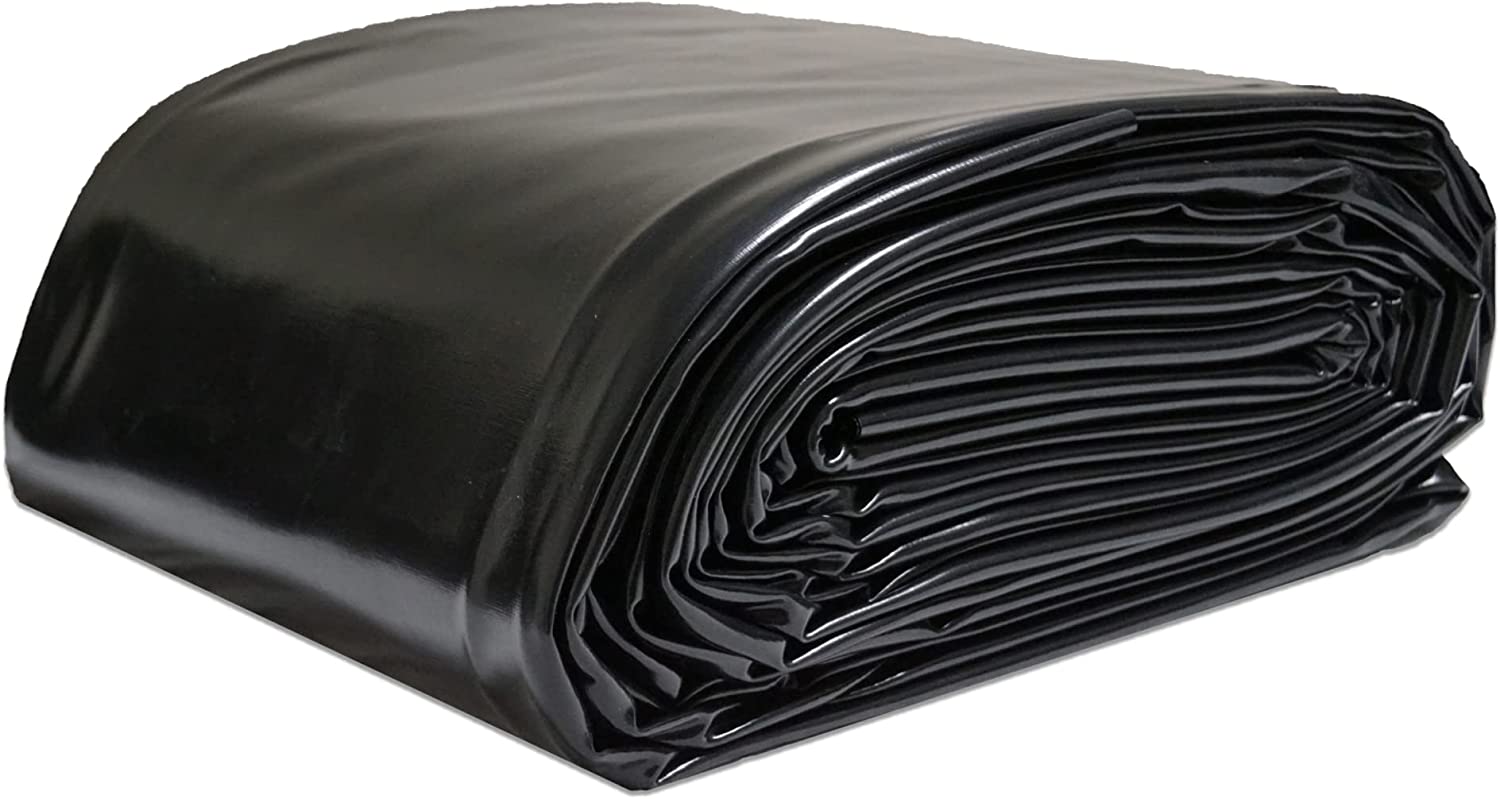
HDPE pond liners cut from a roll and welded to tailor it to the water pan dimensions
Where to buy dam liners in Kenya
Positioning Your Water Reservoir For Irrigation
This depends on:
i. The source of water going into the water pan. If the source is from a lower altitude water source such as a river or lake, the water pan is at an elevated position so that with a water pump, the water is reticulated through irrigation water pipes to the water pan. If the water source is from rain water falling on the roofs or run-off, the water pun is positioned at a lower gradient
ii. Preferred irrigation method. If by sprinkler irrigation or rain hose kits which require high pressure from a water pump, the water pan will be situated at any point. If by low gravity pressure say for drip or button drip irrigation, then it will be at the highest point of the farm

Water harvesting using dam liners
Where to buy dam-liners in Kenya
How to Harvest Water Using Dam Liners
Factors to consider
1. Land size
The amount of water required for half an acre is less than that needed for 20 acres. The latter will harvest more water to irrigate the greater acreage, and the former will have less water harvested. The bigger the volume of water reserved, the larger the dam liner size
2. Location
The amount of rain fall is different in every climatic zone. Growers in the cool wet highlands have just a few dry months in the year, while farmers in the dry zones have more dry months than wet. In regions where the interval between rains is long, larger reservoirs are built for the same acreage as that in the cool wet location. Again, dry locations have very high water loss through evaporation. In this case, it is advised to set up a shade net over the water reservoir to manage this water loss
3. Ground Elevation
The farm gradient determines the location of the water pan. Some choose to have it at the lowest part so as to capture run-off water. If it is for crop irrigation, this water is either pumped uphill to a tank from where it flows back by gravity to the crop. Or it is pumped directly to the crop from the water reservoir. Others choose to locate the water pan on the highest point of the farm so that the water, through gravity flows out to the crop. In this case, the farmer does not retain run-off rain water from the farm. On a flat terrain, irrigation water is physically pumped out to either a high storage tank for onward gravity flow to the crop. Or directly to the crop

A low reservoir that collects run-off rain water
4. Farming System
The size of the water pan will differ for irrigation, compared with aquaculture or livestock production
5. Crop Type
Some crops are more water demanding such as leafy vegetables, than others such as herbs. Then some crops like onion are densely spaced while others are like avocado are sparsely populated in the farm. This will determine the water requirement
6. Irrigation System
Every irrigation system has it’s own unique water use. Drip irrigation conserves water while overhead irrigation through sprinklers or rain hose kits spends huge water volumes
7. Surface Texture
The surface texture of the water pan determines the dam liner thickness to install. For a smooth surface, a 0.5mm dam liner is ok. Where the surface is stony or rocky, then the 0.75mm or 1mm dam line is better
Before harvesting your water using dam liners, ensure that the water pan’s surface is free of debris as much as is possible. This will be stones, rocks, tree stomps, or sticks. This reduces the danger of your dam liner tearing as a result of perforation caused by the weight of the water squeezing the material against these particles
Trench 0.75M to 1M along the perimeter or circumference of the water pan. This trench is 1ft wide and 2 ft deep. Your dam liner edges will be tucked in here and covered with soil, gravel or stones to anchor it in place. Alternatively, use sand bags along the edges to hold your dam liner in place
Where to buy dam liners in Kenya
How Are Dam Liner Sizes Calculated?
Before determining the dam liner size, one must understand the size of the reservoir or tank. This is by measuring the length, width, and depth/ height (for rectangular or square shaped reservoirs/ tanks). For circular or cylindrical tanks/ reservoirs, measure the diameter, and the depth/ height. The reason this is key is because our dam liner material comes in rolls. To make out the shape of the water pan or tank, the dam liner is cut in large bits from the roll and joined together. This is to create the 2 dimension size of the water reservoir or tank. For example; if the width of the dam liner on the roll is 8M, and the water pan requires a width of 15M. Then 2 pieces, one measuring 8M and another 7M in width from the roll are cut and joined to create the 15M width
How Do I Calculate How Much Dam Liner I Need?
The dam liner calculator is adapted to the shape of the irrigation water reservoir as illustated in the 3 different shapes below
- Sloped sides reservoir

The slope of the dam wall is shown as slanting length (SL) or slanting width (SW) in the dam liner calculator tabulation shown later in this page
2. Cylindrical circular tanks
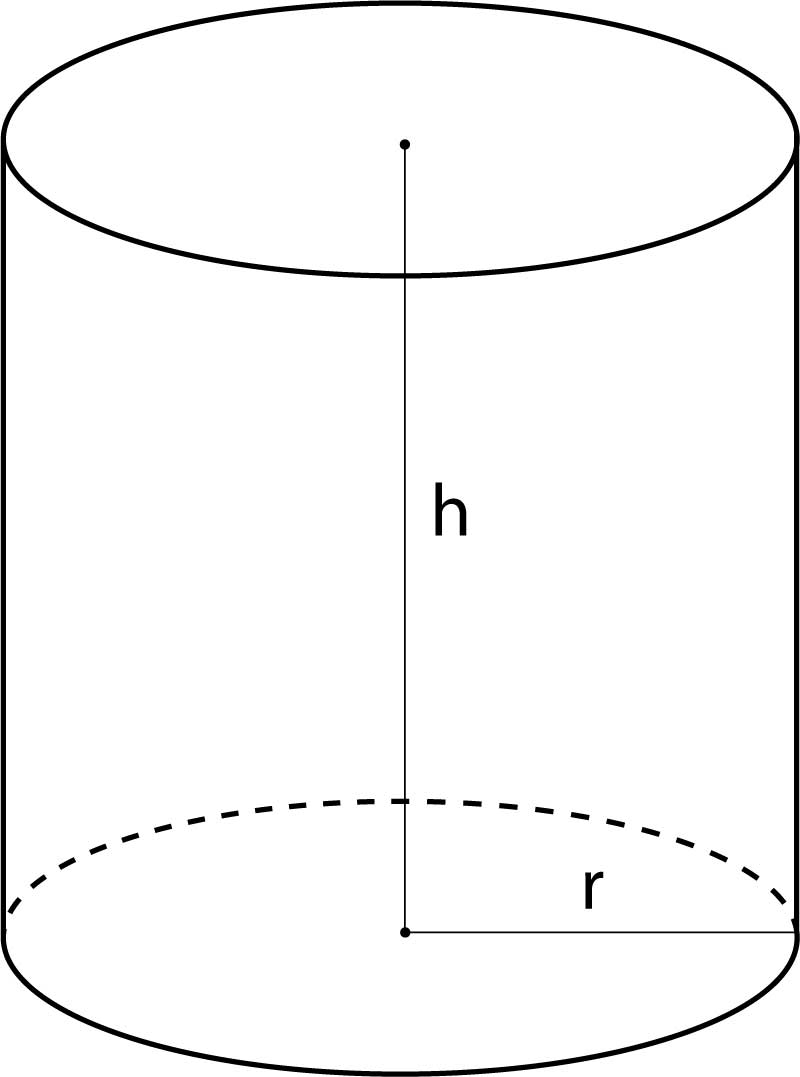
3. Straight side reservoirs
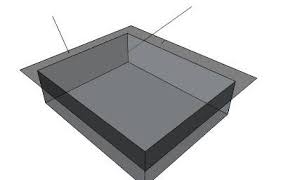
Where to buy dam liners in Kenya
Pond Liner Calculator Table
| Circular Liner | Sloped Sides Liner | Straight Side Liner |
| (Circumference*H+0.6M) + (3.14*3.14*r+0.6M) | (SL*2+D+2M)*(SW*2+D+2M) | (L+2D+2M) * (W+2D+2M) |
If your totals include a decimal say 120.3sq, round it up to the nearest whole number, in this case 121M sq. The +0.6M in the ‘circular liner’ and is the overlap. So is the 2M in the straight side liner’
“D” is the maximum depth which is the center-most point of the reservoir
Where to buy dam liners in Kenya
How much overhang should a pond liner have?
An overhang is the extra liner material that holds the main liner in the reservoir or tank. This excess material is held against the external wall of the tank, or tucked in a trench all around the reservoir to support the dam liner in place. It is covered with soil or stones in the trench. Another alternative to trenching is to lay sand bags on it. The weight of the sand bags holds the dam liner in place
After excavation, it is necessary to compress the mould of soil roundabout the water pan before making a trench
See below
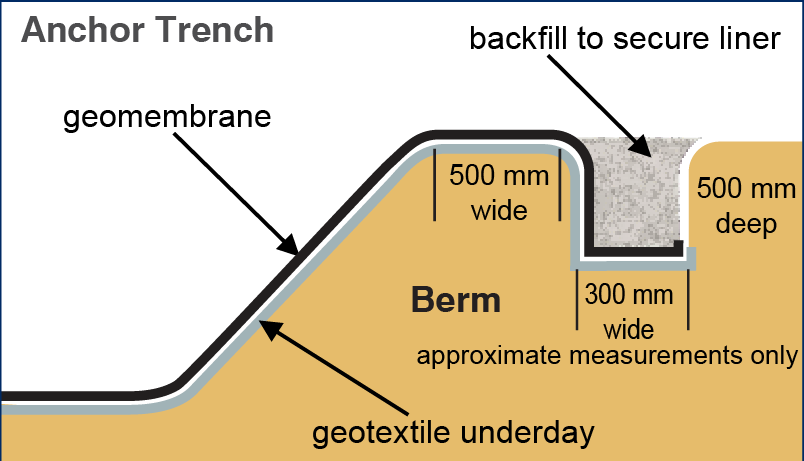
Where to buy dam liners in Kenya
How To Weld Dam Liners
- Factory welding. Depending on the dam liner size, weld it whole or partially in the factory. The weight and volume of the welded material must be easily portable on site. The latter factor guides on how much of the dam liner material will be put together in the factory
- Site or field welding. This is done on site at the point of dam liner installation. It is the joining together of the partially welded dam liner pieces from the factory. Site welding is done when the entire dam liner could not be wholly put together in the factory. This is as a result of weight or bulkiness, which limits lifting and transportation of the bulky and heavy material. The weight size of the portable material depends on the thickness of the dam liner. The thicker it is, the less it is
- A wedge welding machine or a heat gun/ heat blower is the equipment that does dam liner welding. A wedge machine is what does it in the factory. The heat gun is highly portable, and so is best for field joinery
Dam liner welding involves melting the liner material under high temperature at the point of joining them. Once melted, the 2 layers are laid one over the other and as they harden, become one unit
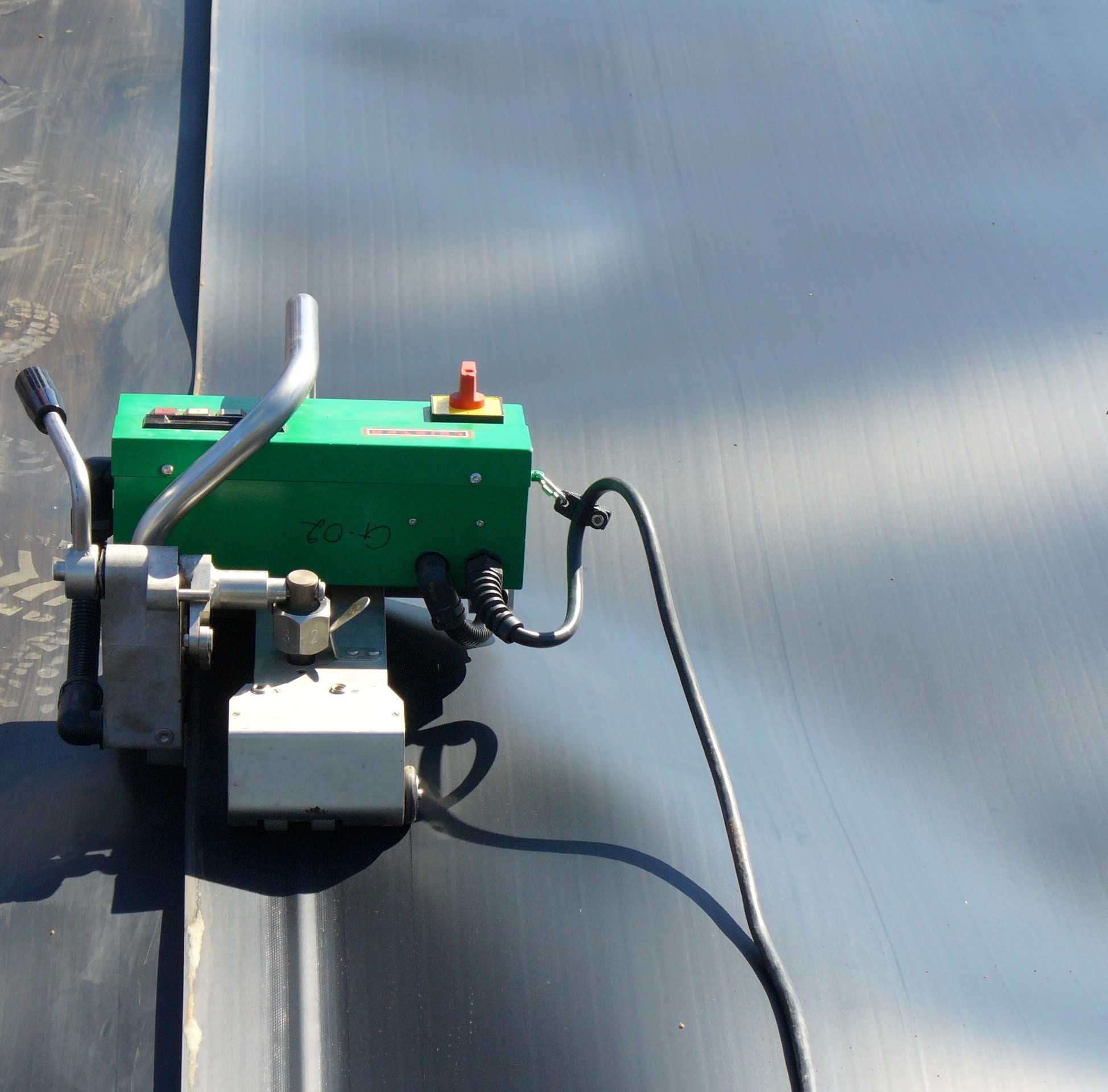
Factory wedge welding of a 1mm thick dam liner
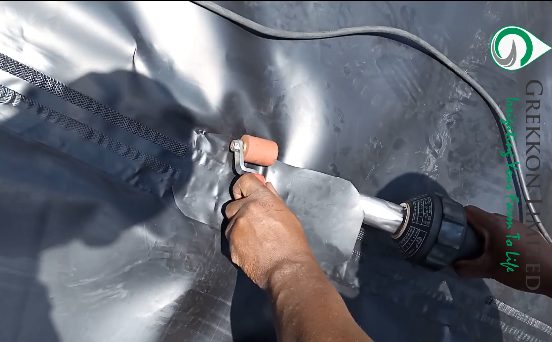
Joining 2 dam liner pieces with a heat gun
Both equipment run on electric power. In off grid electricity locations, Grekkon Limited provides a generator to power the heat gun or wedge welding machine
Where to buy dam liners in Kenya
A Step by step procedure on how to install dam liners
To learn how to install dam liners in your water pan or tank, consider the following factors
- Determine if;
1.1. It is a water reservoir
or
1.2 A water tank
Each storage unit has a different way of calculating the dam liner
2. Define the shape of the water pan or tank;
2.1. Is it circular/ oval or square/ rectangular?
2.2 Are the rectangular/ square sides steep or slanted?
The dam liner calculation formulae is different for each shape as illustrated later in this article
The second stage in how to install dam liners is to work out the dam liner size

A Grekkon Limited technician installing a dam liner in a water reservoir
